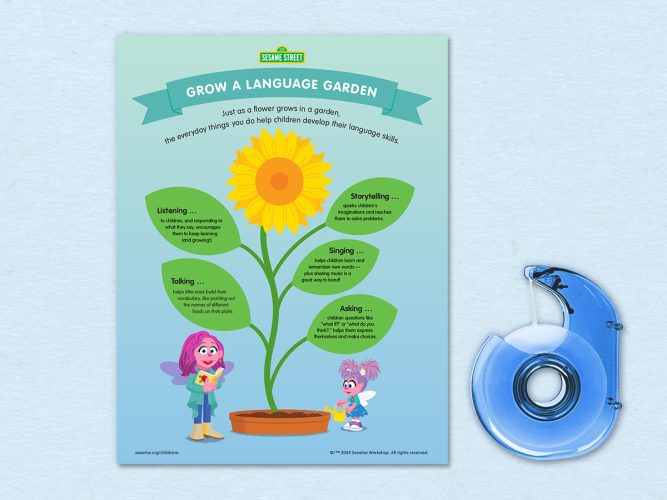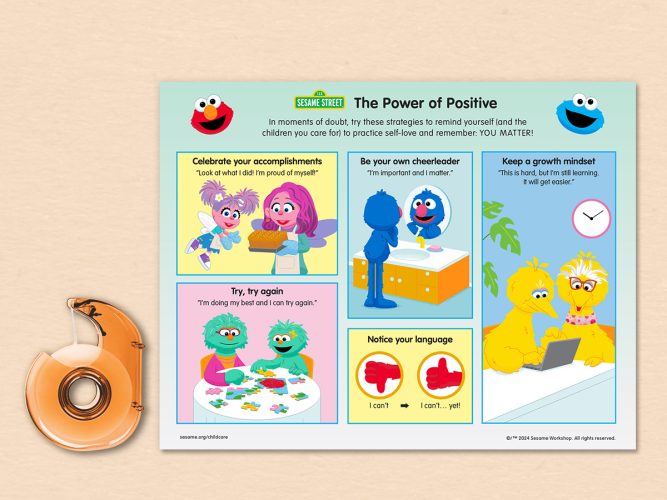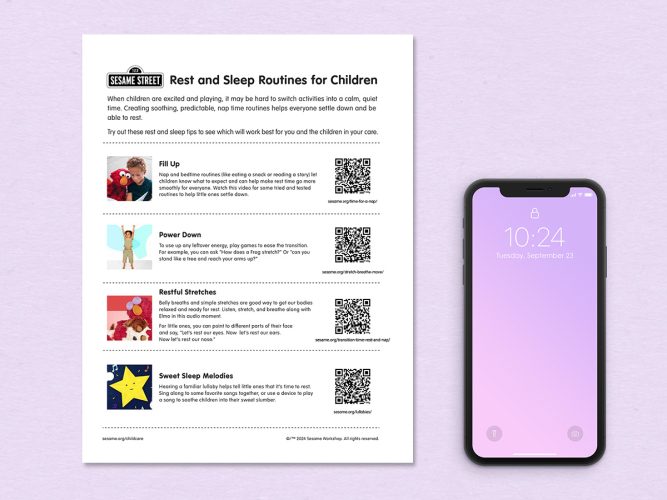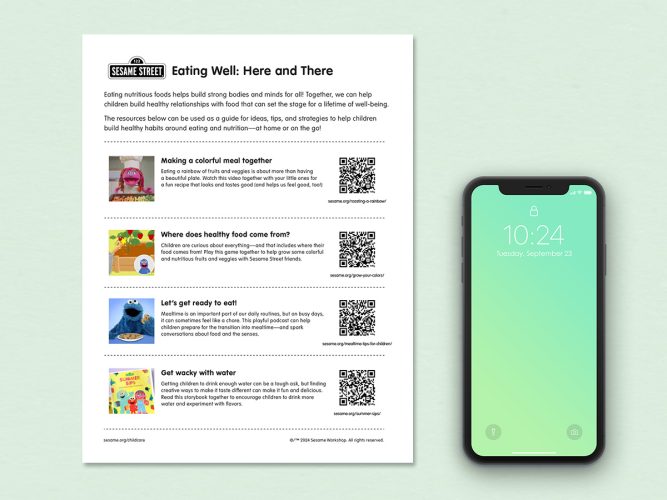
Expressing & Handling Emotions
Use these activities to help children express and manage strong feelings.
Here are some ways to help kids express and manage their feelings.
- Talk with kids about clues in their bodies that help tell the difference between comfortable and uncomfortable feelings. For instance, if a child is angry or nervous, they may feel warm; if they feel excited, they may want to jump up and down. Tuning in to their bodies can help kids identify their own feelings.
- Demonstrate how taking slow, deep breaths can help manage overwhelming feelings and help kids calm themselves down a little.
- Read a book together and talk about the characters’ feelings (“Alex is covering his eyes and clinging to his dad. How do you think he feels?” or “It looks like Alex feels afraid. Do you remember feeling afraid of the dark?”) Point out that everyone experiences emotions differently.
- Validate kids’ feelings. Let them know it’s okay to have more than one feeling at the same time, and these feelings may come and go. Brainstorm plans to comfort them when they have difficult feelings, such as carrying comfort objects or keeping a family photo in their pockets.

Cultural Connections through Family Engagement for Building Stronger Bonds

Mindful Caregivers
Practicing mindfulness is a great way to slow down and reset.

Tracking Child Development: A Caregiver’s Guide
Keeping track of milestones and going to routine screenings helps children stay healthy and thriving.

Growing a Language Garden: Everyday Language Development
A reminder of the simple things you do every day that nurture children’s language skills.

The Power of Positive
Gentle reminders for practicing self-kindness and compassion.

Routines to Help Children Rest and Sleep
Soothing, predictable, nap and bedtime routines can help children settle down for rest.

Eating Well: Here and There
A printable page with easily shareable resources to encourage children’s healthy relationships with food.
